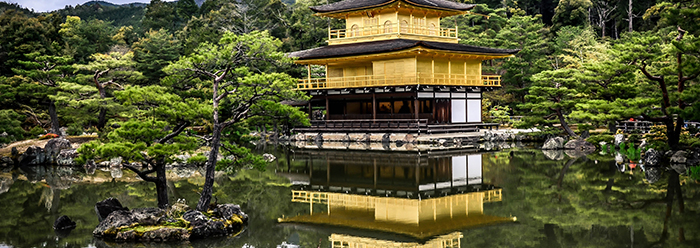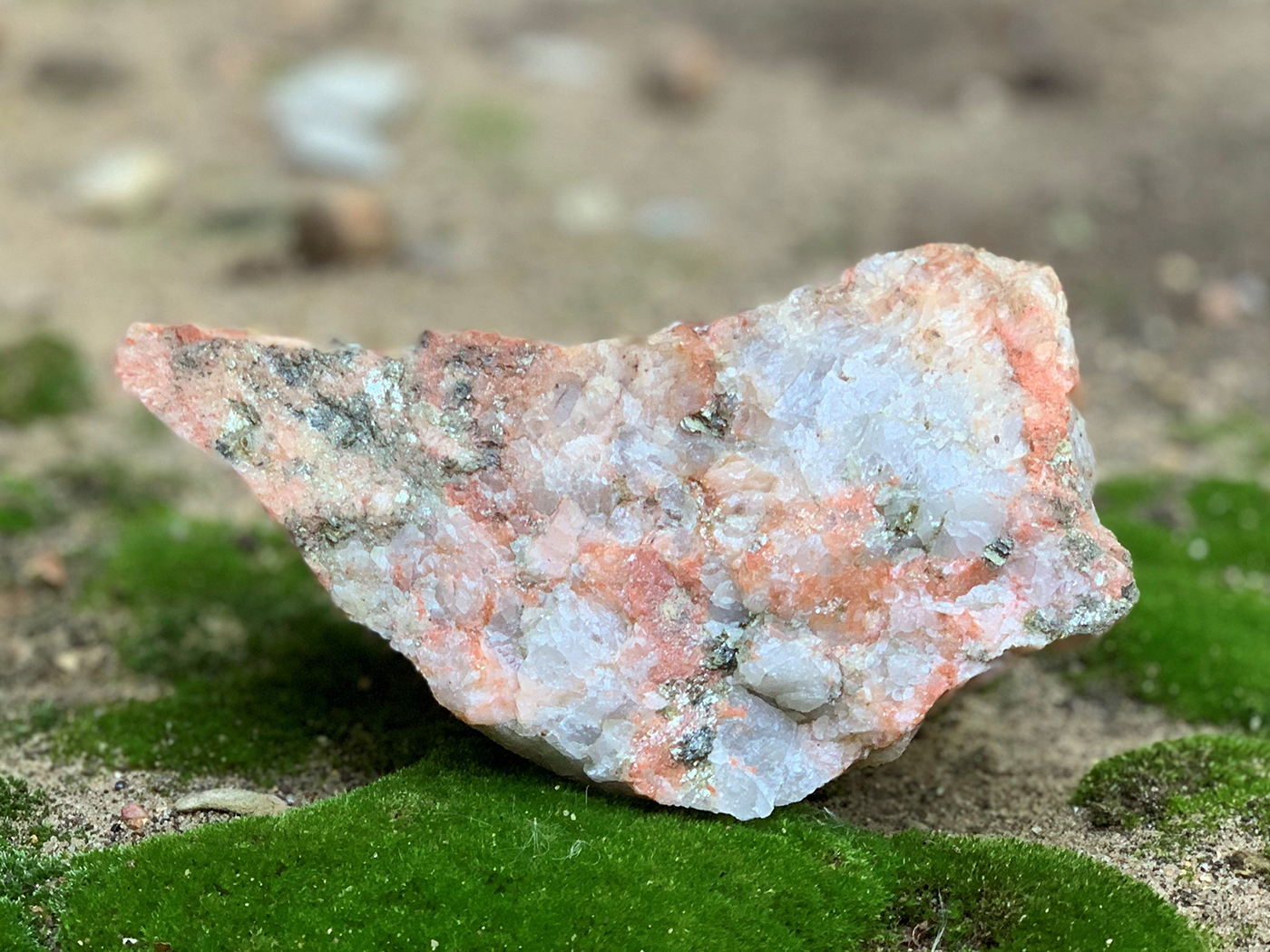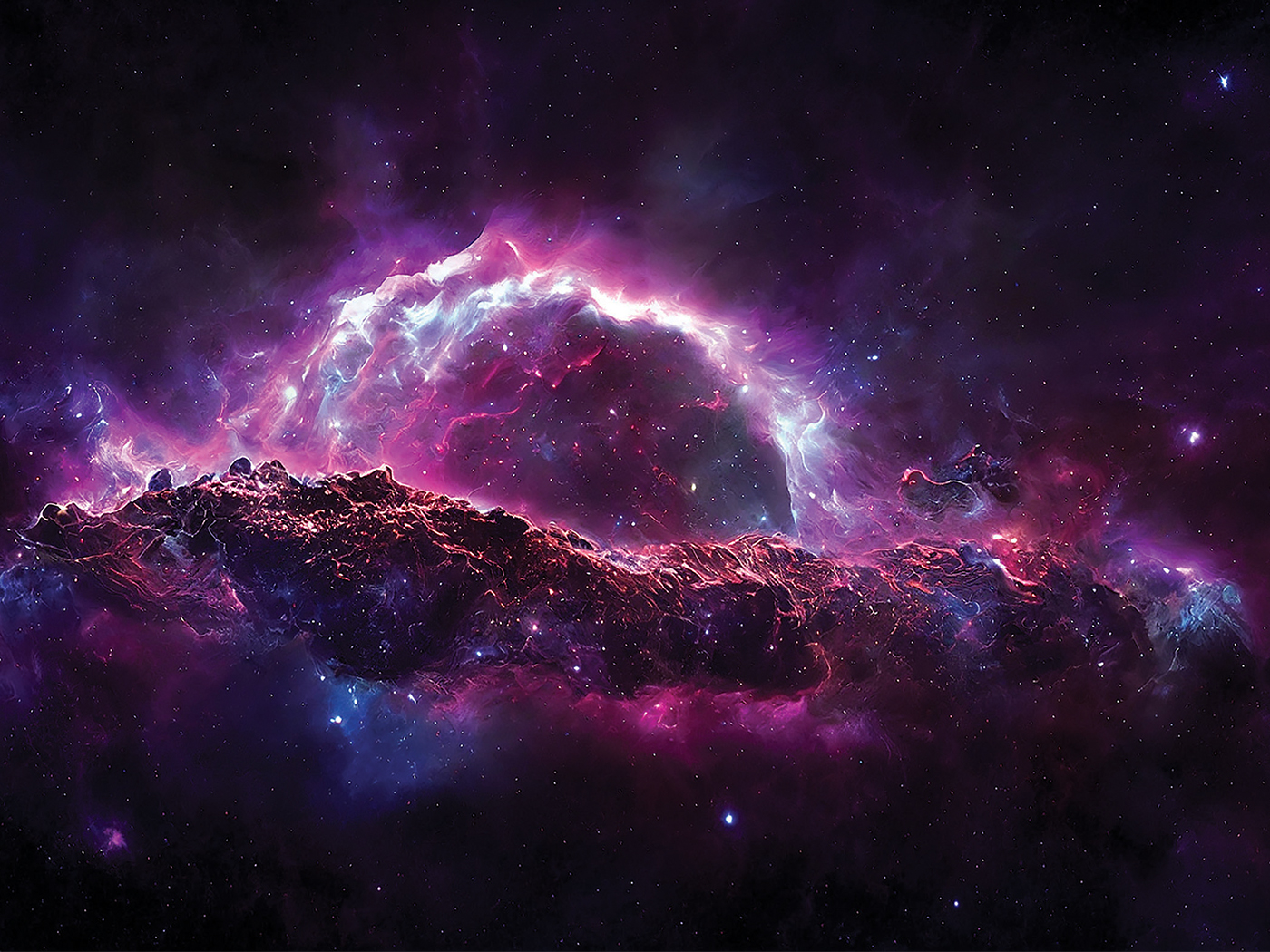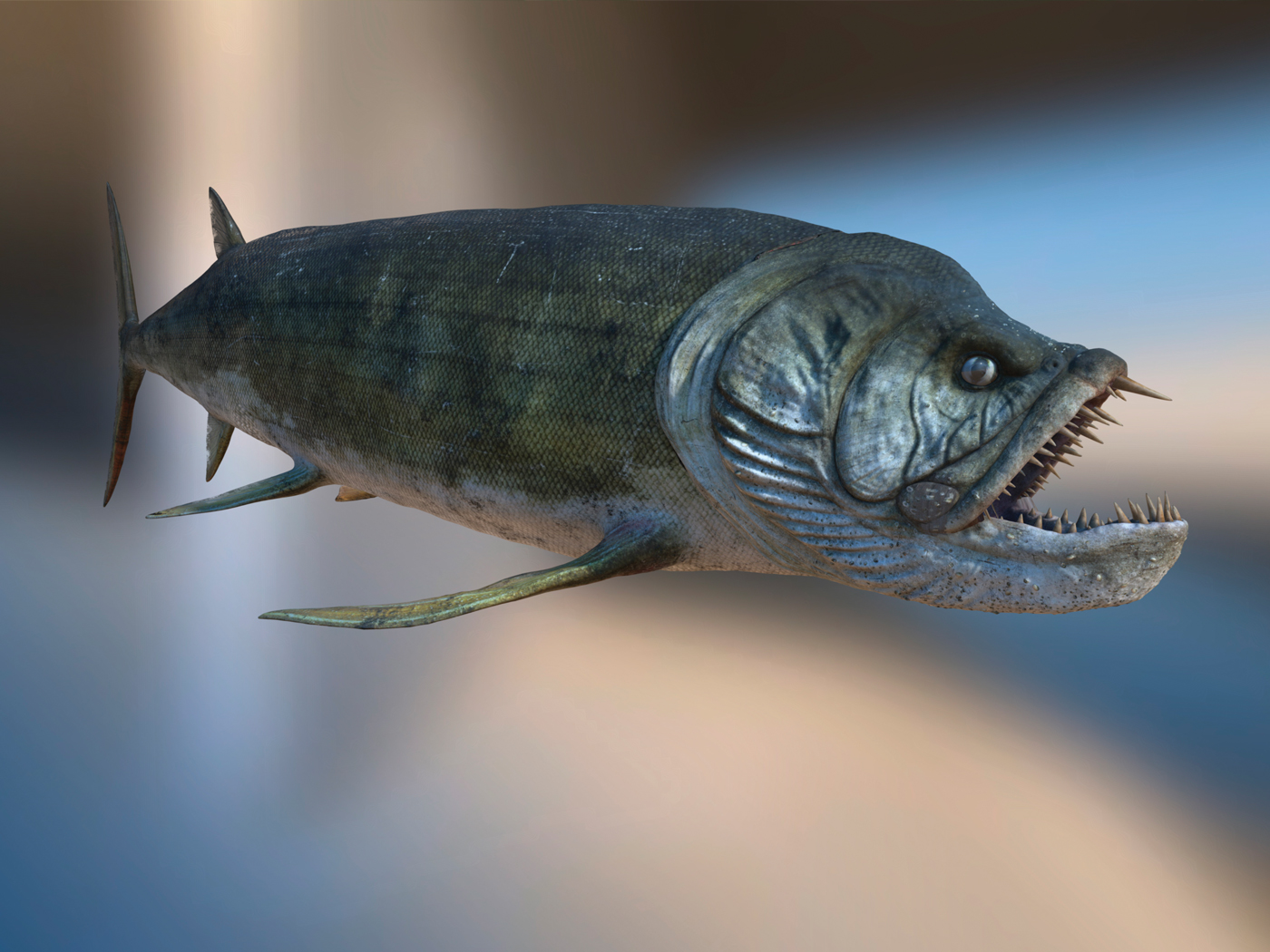by Steven A. Austin, Ph.D. and William A. Hoesch, M.S.*
Geologists have long known that explosive volcanoes of the past were far bigger than the relatively tepid eruptions known from human recorded experience.1 As a new generation of geologists wonder about the mechanics of supervolcanoes,2,3 some ICR geologists are also wondering about a gigantic volcanic ash pile—the Brushy Basin Member of the Morrison Formation.4 Did this enormous deposit originate as ejecta from super volcanoes in the Sierra region of California? If so, what might these eruptions have been like?
Three styles of explosive volcanoes
Explosive volcanoes come in three types and are classified according to their vent structures: (1) "nozzle," (2) "ring fissure," and (3) "linear fissure array." Nozzle eruptions occur through a pipe-shaped vent with a constricted opening, as at Mount St. Helens (1980) and North Mono Craters (~A.D. 1350). They are the familiar volcanoes of human experience and appear to be size-limited to about 100 cubic kilometers of volcanic products.
Ring-fissure eruptions, also known as collapsed caldera eruptions, begin with a set of surface fractures above a shallow magma body. With increased instability, the fractures "unzip" into a circular pattern and vast "curtains" of ejecta are explosively released along the ring-shaped set of fissures. The evacuation of magma results in the signature collapse structure named a caldera. To give some idea of size of these eruptions, Long Valley Caldera is a 16 by 32 km structure that in a near instant hurled 600-cubic-kilometers of ejecta resulting in the Bishop Tuff. Yellowstone Caldera of northwestern Wyoming was about four times this size. Humans, fortunately, have had very little experience with ring-fissure eruptions, especially these large ones.
Linear-fissure-array eruptions include the largest known in earth history. These occur in settings where crustal tension (associated with plate movements) opens multiple, straight fissures above elongate batholith-size magma bodies. For example, the Sierra Madre Occidental mountains of western Mexico are composed almost entirely of ignimbrite, a rock-type that originated as explosively-emplaced pyroclastic flows.2 At more than 300,000 cubic kilometers, it is called "the largest ignimbrite field in the world" erupted from a series of linear fissures, not calderas. Individual fissures are 50-100 meters in width and over 25 kilometers in length, and the collective dike swarm is thought to extend for the full length of the mountain range (1,200 kilometers). Basin-and-Range faults and grabens provided the plumbing system that delivered the highly fluidized rhyolitic magmas to the surface at discharge rates that can only be described as "super." A higher orbit of the Space Shuttle would be a safe distance to view so massive an eruption.
A super-size deposit
In the western interior states of Utah, Arizona, New Mexico, Colorado, and Wyoming is a remarkable deposit known as the Brushy Basin Member of the Morrison Formation. The layer is over 100 meters thick across wide portions of the Rocky Mountain and Colorado Plateau regions, and altered volcanic ash in the form of smectitic clay is its dominant component. Sedimentary bedforms indicate airfall tephra settled into water and, in some cases, formed into an ash-water suspension that flowed with considerable energy before coming to rest. One such suspension in northeast Utah carried dinosaur carcasses and deposited them in what is today a world-famous dinosaur exhibit.5 Marble-size pumice fragments occur within the air-fallout deposit in Colorado and Utah. The (dense rock) volume of pyroclastics in the Brushy Basin Member, an estimated 15,000 cubic kilometers, would be enough to bury the state of New Jersey to a depth of 740 meters. Volcanoes in the Sierra region are thought to have spewed the ash.6 Chemical and isotopic composition of the Brushy Basin Member appear to match granitic plutons in the Sierra Nevada Batholith, as well as rocks of the Independence dike swarm in the eastern Sierra and Mojave region. The Brushy Basin Member of the Morrison Formation testifies of super-size volcanism and simultaneous watery catastrophe. But where were the fissures from which this ejecta came?
Did supervolcanoes erupt in the Sierra Nevada region during the Flood?
Nearly all the granitic rocks making up the Sierras originated as plutons emplaced during two abbreviated "magmatic flare-ups"; one in the Late Jurassic and another in the Late Cretaceous.7 Remnants of volcanic rock in the highly eroded Sierra Nevada Range indicate that highly explosive volcanism also accompanied these flare-ups. Three lines of evidence suggest explosive volcanism during this Late Jurassic flare-up in the Sierras was the source for the gigantic ash deposits of the Brushy Basin Member.
1. In California's southern Inyo Mountains and western Mojave Desert are volcanic deposits that may represent the "upwind" equivalent to the Brushy Basin Member.
A 2,260-meter-thick succession of volcanic mudflow and pyroclastic flow deposits, known as the upper interval of the Inyo Mountains Volcanic Complex, is considered "the eastern fringe" of a volcanic/sedimentary cover that once extended over the top of the Sierra Nevada Batholith.8 The mudflow deposits consist of matrix-supported volcaniclastic conglomerates with subangular dacite clasts to 1.5 meters in diameter. Individual mudflow beds to 20 meters thick sometimes display coarsening-upward, then fining-upward texture, indicative of catastrophic flow conditions. These are interbedded with coarse sandstones and pyroclastic ignimbrite sheets of dacite-rhyodacite composition. Fossils found in the deposit include bivalves of the Unionidae family and gastropods of the Neritidae family, which remarkably are found also in the Brushy Basin Member of the Morrison Formation far to the east. It is easy to envision the Inyo Mountain mudflows and pyroclastic flows grading eastward into the airfall tuffs and mudstones of the Morrison Formation in a vast, once-continuous sheet that has since been dissected by erosion. A source-vent in the Sierras is indicated.
2. The Independence dike swarm is the preserved remains of a linear set of fissures that may have served as vents for supervolcanoes.
A set of cracks extends for over 600 kilometers from the southern Mojave Desert (Chuckwalla Mountains) to the central Sierra Nevada Range nearly as far north as Mammoth Lakes.9 Known as the Independence dike swarm, this northwest-trending belt consists of hundreds of dikes, individually about a meter in width. They often occur in composite "sheet dikes" in excess of 100 meters in width. In places the belt is 90 km wide. These dikes generated pull-apart space on the order of hundreds of meters along the length of this belt. The cracks are filled with rocks of mafic to felsic composition. The swarm of dikes has long been interpreted as having opened as an event with an interpreted age of ~150 Ma (Late Jurassic). Its origin has traditionally been tied to that of Sierra Nevada granites; "The Independence dike swarm apparently formed by local fracturing of the carapace above the Late Jurassic Sierran batholith during rapid changes in plate motions."10 The dike swarm may represent the eroded substructure of linear-fissure-array supervolcanoes. It is significant that in the east-central portion of the Mojave Desert lava flows of rhyolitic to basaltic composition are up to 500 meters thick. These lavas indicate that the Independence dike swarm once had communication with the surface.11
The Independence dike swarm closely resembles another set of cracks called the Rancho San Marcos dike swarm,12 which extends from southernmost California into northern Baja Mexico and parallels the axis of the granitic Peninsular Range. The dike rock that fills these fissures is cogenetic with both the granites of this range and the thick pyroclastic "carapace" that partially overlies it called the Santiago Peak Volcanics. In fact the cracks are recognized as the source-vents for the volcanics! The picture is one of granitic magmatism and simultaneous violent fissure eruptions. The similarities between the San Marcos and Independence dike swarms suggest a common type of origin for both.
3. Liquefaction of sandy sediment in south-central Utah points to an immense seismic-shaking event. Supervolcanoes in California may have been the cause.
Liquefaction occurs when loosely packed and water-saturated sediment is transformed from a condition of grain-on-grain stability to a condition in which load is transferred from the particle contacts to the pore fluid. It is usually triggered by seismic shaking. The process can cause large bodies of sand to behave as a fluid for short moments, and revert back to a "frozen" and stable state when the shaking stops. Across a broad portion of south Utah is an accumulation of large cross-bedded sandstones of the Glen Canyon and San Rafael Groups that is 1.5-3.0 kilometers thick. The sands were obviously in a water-saturated state when they were folded into convoluted shapes and injected into an amazing series of dikes and pipes.13 The distribution of disturbed bedding corresponds with the boundaries for the sedimentary basin that contains the thick sands. Overlying the sands like a smoking gun at the scene of the crime is the Morrison Formation (and its equivalents). Something big shook these thick sands when they were all water-saturated, and opinions range from explosive volcanism to meteorite impact. The same supervolcanoes in California that supplied the ash for the Morrison Formation may have triggered liquefaction in these thick sands.
Summary
Supervolcanoes on a scale unlike any in recorded human history once shook western North America. The gigantic Brushy Basin Member of the Morrison Formation stands as mute testimony of this violence. Three observations, including super-cracks, super-deposits, and widespread soft-sediment deformation, suggest a violent rending of fissure vents in the Sierra region that was the source for the Brushy Basin ash. The same watery catastrophe that buried dinosaurs in Utah was accompanied by super-size volcanism from sources in the west. The record is best interpreted in durations of days or weeks, not millions of years. The Genesis Flood provides the historical framework used to understand supervolcanoes.
Endnotes
- Austin, S. A., 1998, The declining power of post-Flood volcanoes: Impact (ICR) no. 302, 4 pp.
- Aguirre-Diaz, G. J., and Labarthe-Hernandez, G., 2003, Fissure ignimbrites: fissure-source origin for voluminous ignimbrites of the Sierra Madre Occidental and its relationship with Basin and Range faulting: Geology, v. 31, no. 9, pp. 773-776.
- The term supervolcano can be defined as a silicic, explosive fissure-eruption more than 1,000 cubic kilometers (DRE) of volcanic products.
- Hoesch, W. A., and Austin, S. A., 2004, Dinosaur National Monument: Jurassic park or Jurassic jumble?: Impact (ICR) no. 370, 8 pp.
- Hoesch and Austin, 2004.
- Turner, C. E., and Peterson, F., 2004, Reconstruction of the Upper Jurassic Morrison Formation extinct ecosystem—a synthesis: Sedimentary Geology, v. 167, no. 3-4, pp. 309-356.
- Ducea, M., 2001, The California arc: thick granitic batholiths, eclogitic residues, lithospheric-scale thrusting, and magmatic flare-ups: GSA Today, v. 11, no. 11, pp. 4-10.
- Dunne, G. C., Garvey, T. P., Osborne, M., Schneidereit, D., Fritsche, A. E., and Walker, J. D., 1998, Geology of the Inyo Mountains Volcanic Complex: implications for Jurassic paleogeography of the Sierran magmatic arc in eastern California: Geological Society of America Bulletin, v. 110, no. 11, pp. 1376-1397.
- Carl, B. S., and Glazner, A. F., 2002, Extent and significance of the Independence dike swarm, eastern California, in Glazner, A. F., Walker, J. D., & Bartley, J. M., eds., Geologic Evolution of the Mojave Desert and Southwestern Basin and Range: Boulder, Colo., Geological Society of America Memoir 195, pp. 117-130.
- Carl and Glazner, p. 117.
- Schermer, E. R., and Busby, C., 1994, Jurassic magmatism in the central Mojave Desert: implications for arc peleogeography and preservation of continental volcanic sequences: Geological Society of America Bulletin, v. 106, pp. 767-790.
- Farquharson, P. T., 2004, Geology of the Rancho San Marcos Dike Swarm: Baja California, Mexico. Master's thesis, San Diego State University.
- Huuse, M., Shoulders, S. J., Netoff, D. I., and Cartwright, J., 2005, Giant sandstone pipes record basin-scale liquefaction of buried dune sands in the Middle Jurassic of SE Utah: Terra Nova, v. 17, no. 1, pp. 80-85.
* Steven A. Austin, Ph.D. geology, is Chairman of the Geology Department, and William A. Hoesch, M.S. geology, is Research Assistant in Geology, both at ICR.



















